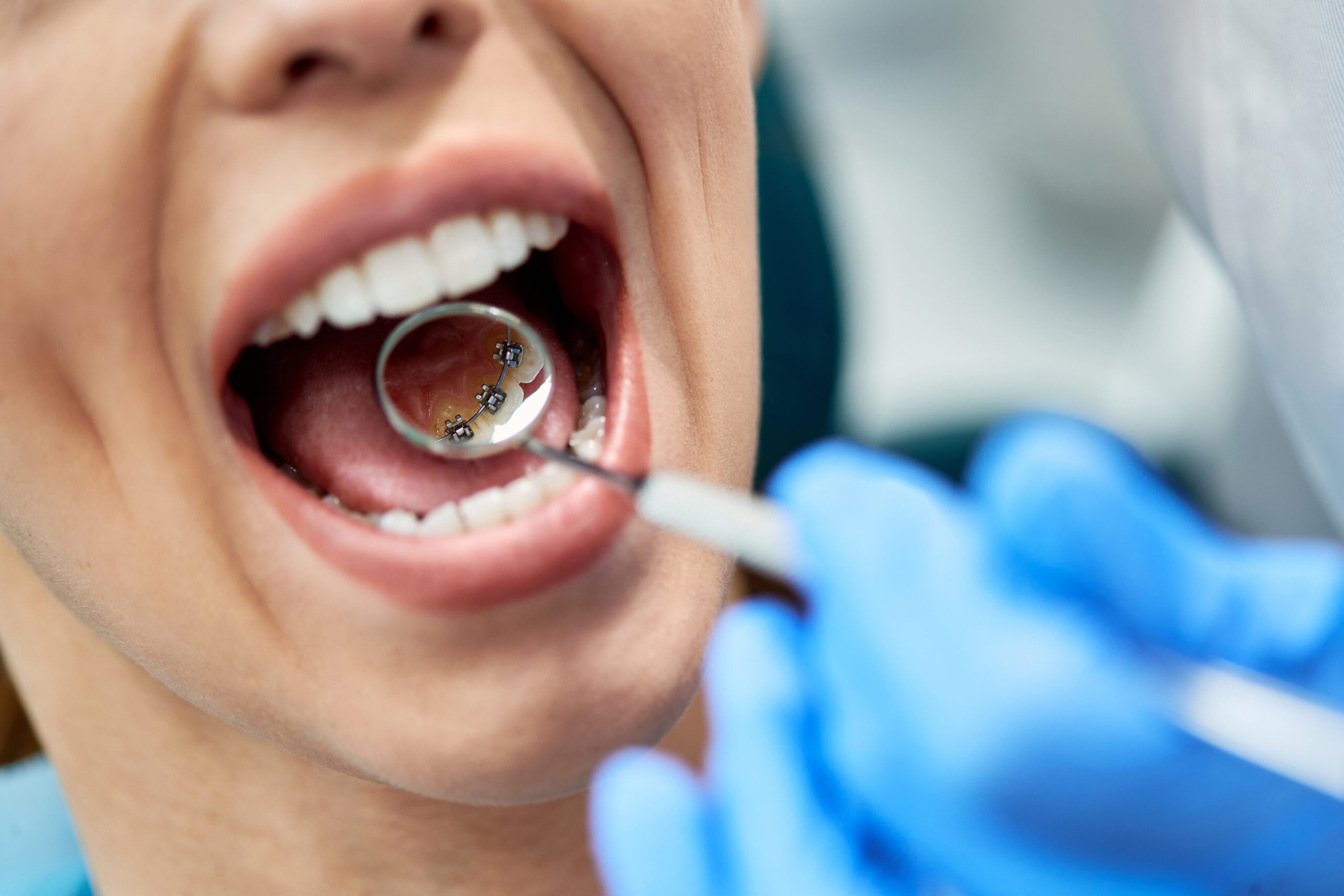Legacy Orthodontics for Dummies
Legacy Orthodontics for Dummies
Blog Article
The Buzz on Legacy Orthodontics
Table of ContentsLegacy Orthodontics - The FactsSome Known Incorrect Statements About Legacy Orthodontics Legacy Orthodontics for DummiesThe Definitive Guide to Legacy OrthodonticsHow Legacy Orthodontics can Save You Time, Stress, and Money.
In enhancement, we offer adjustable therapy routines, adaptable repayment choices and a fun, enjoyable experience.An orthodontist is a dental professional educated to detect, stop, and deal with teeth and jaw irregularities. They remedy existing problems and are educated to recognize problems that may establish in the future. Orthodontists function with people of any ages, from children to adults. Individuals usually associate a best smile with excellent health.
Malocclusion, or misaligned teeth, can result in dental problems, including dental caries, gum illness, and hard or agonizing eating. However not everyone is birthed with straight teeth. If you have a negative bite or large areas between your teeth, you might intend to consult a dental practitioner focusing on orthodontic care.
The Greatest Guide To Legacy Orthodontics
( Picture Credit: DigitalVision/Getty Images) Orthodontists utilize fixed and detachable oral gadgets, like dental braces, retainers, and bands, to change the placement of teeth in your mouth. Orthodontic therapy is for dental irregularities, consisting of: Uneven teethBite issues, like an overbite or an underbiteCrowded teeth or teeth that are as well far apartJaw misalignmentThe goal of orthodontic therapy is to improve your bite.
A healthy bite ensures you can eat, eat, and talk effectively. While you might assume of orthodontists as primarily for youngsters or teens that need dental braces, they can correct oral troubles at any kind of age. Orthodontists participate in college, oral institution, and orthodontic school. After college graduation, they invest 2 or 3 years in an orthodontic residency program.
, yet not all dentists are orthodontists. They focus on two locations: Just how to appropriately and securely relocate teeth Exactly how to correctly lead growth in the teeth, jaw, and faceOnce an orthodontist has actually finished training, they have the option to end up being board accredited.
The Basic Principles Of Legacy Orthodontics
Imbalance, or malocclusion, is the most common factor individuals see an orthodontist. It is hereditary and is the outcome of dimension distinctions between the top and lower jaw or between the jaw and teeth. Malocclusion causes tooth congestion, an irregular jaw, or uneven bite patterns. Malocclusion is typically treated with: Your orthodontist attaches metal, ceramic, or plastic square bonds to your teeth.
If you have just small malocclusion, you might have the ability to use clear braces, called aligners, rather than conventional dental braces (https://www.callupcontact.com/b/businessprofile/Legacy_Orthodontics/9435468). Some people need a headwear to help move teeth right into line with pressure from outside the mouth. After dental braces or aligners, you'll require to wear a retainer. A retainer is a custom device that maintains your teeth in position.
They're most usually utilized on children. They can produce additional space in the mouth without needing to draw teeth. If you have a serious underbite or overbite, you may require orthognathic surgery (also called orthodontic surgery) to lengthen or reduce your jaw. Orthodontists make use of wires, surgical screws, or plates to support your jaw bone.
You might require to see an orthodontist if you have: Crowding or otherwise enough space for all of your teethOverbite, when your upper teeth come your bottom teethUnderbite, when your bottom teeth are too far forwardSpacing or concerns with gapsCrossbite, which is when your upper teeth fit behind your bottom teeth when your find mouth is closedOpen bite or a vertical void between your front bottom and top teethMisplaced midline, when the facility of your bottom and upper teeth don't line up Remedying a dental malocclusion can: Make biting, chewing, and talking easierImprove the proportion of our face and your overall appearanceEase pain from temporomandibular joint conditionsDifferent your teeth and make them simpler to cleanse, assisting stop tooth degeneration or cavities It's typically a dental professional who initially notifications misaligned teeth throughout a routine examination.
The Buzz on Legacy Orthodontics

Throughout your first orthodontic consultation, you'll likely have: An oral examPhotos taken of your face and smileDental X-raysPanoramic (360 degree) X-rays of your face and headImpressions to develop mold and mildews of your teethThese tests will help your orthodontist recognize just how to continue with your treatment. leesburg orthodontics. An orthodontist is a dentist that's had training to treat your teeth and jaw
Orthodontists might perform surgical treatment, exams,X-rays,and more to help you achieve a much more comfortable, healthier smile. An orthodontist is focused on your bite, so something like a chipped tooth would certainly be taken care of by a dental practitioner. Orthodontists are dentists but not all dental professionals are orthodontists. Orthodontists are concentrated on your bite, or the way your teeth meshed, and the straightness of your teeth.
Ever before questioned how celebrities constantly appear to have completely straightened teeth? The response often depends on the proficient hands of an orthodontist. What precisely does an orthodontist do? Orthodontists are dental specialists that concentrate on fixing irregularities in the teeth and jaws. Their knowledge surpasses simply producing a gorgeous smile; it includes enhancing your total oral health and feature.
Excitement About Legacy Orthodontics

While dental braces are the most typically recognized orthodontic treatment, orthodontists have a varied toolkit at their disposal. The specific approach chosen depends on the intensity of the case, the individual's age, and specific preferences. These reliable braces utilize a system of brackets bound to the teeth and linked by cables.
Clear aligners, like Invisalign, are a popular choice for patients seeking a much more very discreet therapy choice. These removable trays are customized to progressively shift the teeth's position. Headgear might be used in conjunction with dental braces or aligners to apply extra targeted pressures, especially for fixing jaw disparities. In situations of narrow jaws, palatal expanders can be used to produce area for appropriate tooth positioning.
Report this page